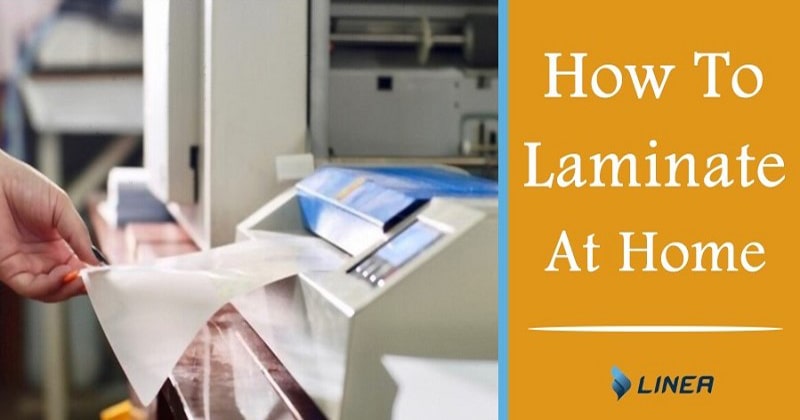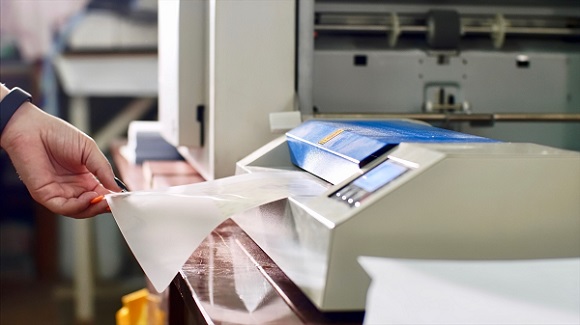by Linea Lorenzo
Laminating documents is one of the best ways of safeguarding them from getting torn, dirt, discolored, or aging. Personal papers, such as ID cards and academic certificates, can be laminated to enhance their safety. Is it possible to laminate at home.
Contents
This article will provide in-depth information on how to laminate documents at home with or without a laminating machine.

Lamination is the process of encasing paper-based documents in a thin layer of paper to protect and make them long-lasting.

If you have some documents to laminate at home, but you don’t know how to laminate at home, don’t worry; you will get a way out. Although a machine makes your lamination easier, you can still get the lamination done without it.
Here are the methods of laminating at home without a machine.
A carton sealing tape is the most convenient and affordable method you can use to laminate your small projects, such as labels. Whether you want to label your bins, baskets, or school bags, this is the easiest way to do it.
To use a carton sealing tape, you have to do the following:
This method uses carton sealing tapes to laminate bigger items, such as children’s learning images. To use this method, you will have to run layers of sealing tape over the thing you are laminating till it is satisfactory.
Although the method is affordable, it comes with downsides, such as air bubbles and several lines at intersection points.
Generally, laminating pouches work with a machine, but you can use them without a device. Instead, you can use an iron to accomplish the project though it will be a bit slow.
Laminating pouches are two sheets attached at one side, allowing you to fit the document in between.
If you want to laminate a document using the pouch, place it between the sheets and close the pouch. After that, put a towel over the pouch and iron it using an iron with medium heat. Do it many times until you achieve excellent results.
Self-adhesive sheets are ideal for laminating large projects, especially the A4-sized ones. The sheets come in numerous models, but it is advisable to consider using the one with a grid at the back for your paper’s easy positioning.
To use the self-adhesive sheets, peel at least an inch of the backing and attach the paper you are laminating. Use a grid strip at the top to position the paper properly.
After that, turn the project upside-down and use a ruler to go over the adhesive sheet in contact with the document, as pull the backing to replace it with your paper. Repeat the process with another adhesive sheet to laminate the other side of your form. Finally, remove the grip strip at the top of the document and seal the spaces together.

Although laminating machines are expensive, they are one of the efficient ways of achieving professional results. Before you start the project, it is advisable to choose a laminator that suits your needs. Consider buying a laminator that can accommodate all sizes of documents, from small to medium, large, and extra-large.
There are many laminators on the market, and knowing the right one can be tricky if you don’t know how to go about it. The following factors will guide you know what to look for when buying one.
Laminators come with cold and hot laminating capabilities. If you want convenience and perfect results, it is crucial to select a laminator with a roller system that supports both cold and hot laminating.
Laminating speed is based on the number of inches per minute a laminator can print a document. Most machines print between 10 to 15 inches per minute, and cold laminating is faster than hot ones. If you want to do your project faster but efficiently, look for a laminator beyond an average printing speed.
Laminators heat up differently. Averagely, it takes about five minutes for a laminator to warm up. Depending on how faster you want your project to be done, it is advisable to buy a machine that works best. For instance, if you are going to do things faster, get a machine that takes less than a minute to warm up.
Maximum width refers to the maximum number of inches of a project that a laminator can handle. Most machines can hold up to 15 inches of tasks. If you intend to laminate large documents, consider buying a laminator that is beyond the average width.
Buy a laminator that features a jam release button to help you if a project gets stuck. This way, you will prevent damage to your documents.
During inactivity, some laminators shut off automatically, conserving energy and preventing overheating.
Like other equipment, laminators ought to be maintained to work efficiently and last longer. Here are the tips on how to keep your laminator.
If you want your machine to work effectively, always keep it on a flat surface. Also, leave adequate room behind the laminator for documents to exit to prevent the device from jamming. This way, your documents won’t be ruined.
Sometimes, laminating pouches can lose their adhesiveness in the machine, leading to poor-quality lamination and jamming. Pouch jackets are ideal when laminating small documents and they reduce untimely jam.
Laminators are different, and they operate under different temperatures. Beware the guidelines regarding your paper’s weight, laminating pouch’s thickness, and pouch jacket’s details. Understand the recommended temperature of your gadget and adhere to it.
To protect your documents and laminator against damage, always insert your document’s sealed end whenever laminating. Additionally, avoid forcing documents into a laminator and never insert them at an angle. This will prevent creased documents and jam.
Since you are laminating at home, buy a machine that fits that environment. The purpose of a home laminator is to help with a few personal documents. Therefore, you don’t have to purchase a heavy-duty laminator since you are handling simple tasks.
If you want to enhance your laminator’s rollers’ efficiency, always let it cool before you switch it off. Some good laminators come with a cold option button, permitting you to make your laminator cool down. It is advisable to let your laminator cool for between 10 to 15 minutes to allow it to operate smoothly. Refer to the machine’s operating instructions to find out whether if there is any specific cooling time.
Cleaning a laminator is one way of maintaining it to last longer. Here are the steps for cleaning your home laminator.
Before you clean the machine, ensure you turn it off to enhance its safety.
It is easier to clean a laminator when its rollers have cooled than otherwise.
If there is any laminate stuck on the rollers, don’t scrap it using a knife because you will damage the rollers.
To remove the roller for cleaning, put the machine into a reverse position and extract any lamination from it.
when you notice there is any excess laminate on the rollers, warm them up to clean the extra film easily. If the films are difficult to remove, use a rubber rejuvenation to dismantle the glue.
If you want to clean your laminator normally, use a non-abrasive sponge pad to cleanse off heat shoes and the course pad for cleaning the rubber rollers.
 |
 |
 |
 |

About Linea Lorenzo
Linea was born to love drawing and just a few tech gadgets. While not working or sleeping, he often spends hours to look through the coolest, latest gadgets at different shopping sites, drooling about them. He also likes to keep things clean and tidy - now that the reason you see so many cleaning devices and electronics reviews at linea.io. Ah yes, he made the site also just for that. Occationally, he invited friends to share their expertise around here too. Linea received Bachelor of Arts in Arts & Letters at Sacramento State University.
 |
 |
 |
 |
You can Get FREE Gifts. Furthermore, Free Items here. Disable Ad Blocker to receive them all.
Once done, hit anything below
 |
 |
 |
 |